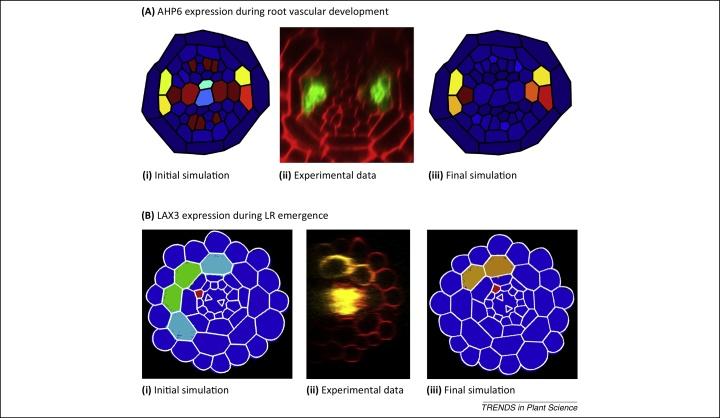
Most hormone transduction pathways include several negative or positive feedback loops, each of which can function differently. The interweaving of these loops makes the output difficult to predict using logic alone. Systems approaches involving mathematical or computational models allow researchers to simulate the behavior of these non-linear networks and predict emergent properties. Lifeasible can model development and hormone effects for your plant development projects. It can simulate the interaction between hormones and plant development through different assumptions made by computers.
Hormone transport models can be used to study the intercellular transport of various hormones, including cytokinin, auxin, and gibberellin. Cell-to-cell transport involves transplastomic output, diffusion through the extracellular body, and importation into adjacent cells through the plasma membrane. Auxin transport from cell-to-cell results in local asymmetries in auxin distribution, and these asymmetries drive various developmental processes. Auxin transport occurs at multiple scales, including subcellular redistribution of PIN transporters, remote auxin transport throughout the plant, and strict control of auxin perception at organ and tissue scales. This complexity has given rise to several mathematical and computational models that help interpret and subsequently predict experimental data.
 Figure 1. Multiscale models of hormone-regulated root development. (Voß et al., 2014)
Figure 1. Multiscale models of hormone-regulated root development. (Voß et al., 2014)

Models of hormonal regulation of plant growth and development focus on single organs or parts of organs. Lifeasible is creating new models that build digital versions of real plants by modeling combinations of genetic networks, physiological processes, and spatial interactions between components.
Lifeasible provides technology to enable more advanced simulations and computational models to test different assumptions about auxin transport. Relies on experimentally determined PIN positioning patterns generated by confocal microscopy and computer-based image analysis to run simulations that include auxin as the only dynamic variable. These simulations confirm that PIN transporters can sufficiently describe auxin patterns in buds and roots. The computer simulation also revealed the role of auxin inflow protein in root tips.
Translating spatio-temporal variations in hormone levels into differences in cellular behavior requires capturing models of regulatory networks involving gene transcription, translation, and protein-protein interactions. Lifeasible has developed gene regulatory network models for selected hormones and uses different modeling methods, including Boolean, stochastic, and ordinary differential equation (ODE) models, among others.
1. Only realistic models can make realistic biological predictions that can be verified experimentally. To improve the model, more quantitative data needs to be generated and incorporated into the model. This requires changes in the way biologists design, perform and analyze experiments.
2. Models often ignore key processes, such as biosynthesis and degradation, which, together with transport, can play a crucial role in determining the cellular abundance of hormones. By integrating these processes into the model, unexpected mechanical insights often emerge.
Lifeasible is dedicated to building models of plant development and hormone action, providing customized services for plant development. Supported by state-of-the-art technology and scientists, our tailored model-building services for plant development and hormone action will ensure the success of your project. If you are interested in our services, please feel free to contact us, and we will get back to you as soon as possible.
Reference
Lifeasible has established a one-stop service platform for plants. In addition to obtaining customized solutions for plant genetic engineering, customers can also conduct follow-up analysis and research on plants through our analysis platform. The analytical services we provide include but are not limited to the following:
Get Latest Lifeasible News and Updates Directly to Your Inbox
Mechanisms Regulating Plant Chloroplast Biogenesis
April 15, 2025